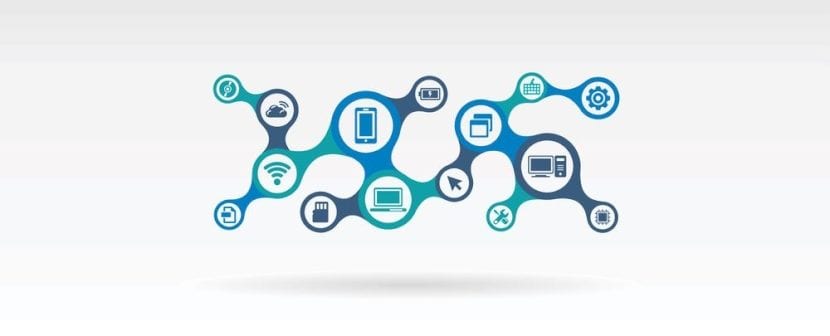
Interoperability through the Cloud: How to achieve it?
The current development of Information and Communication Technologies (ICT) has imposed the modern world, especially in the area of providing business, commercial and financial services, both public and private, for the benefit of its users (consumers and citizens), the need for Information Systems (IS) to be increasingly interoperable.
Knowing and fully understanding each of the elements that surround the issue of Interoperability of Computer Systems, through the Cloud (Internet), is something essential for any person, both ordinary and professional, since the consolidation of the interaction between the Organizations among themselves, and these and the Governments in the development of programs or services, and their each better integration, interrelation and complementation, it will result in greater citizen support, and in turn, in the improvement of the quality of life of all.

Introduction
The ideal of being able to share data (information) in a universal and transparent way, that is, regardless of the technology that supports its storage, processing or distribution, It has accompanied the evolution of man and the development of ICT since its very beginnings. Everything created by Man from writing (letters, numbers, units of time) to the current Media (Press, Radio, TV and Internet) have the essential objective of achieving communication, dialogue and understanding.
Thus, The improvement or improvement of the conditions (technologies, equipment, platforms) for the exchange of information should be a transcendental aspect both for organizations and entities and for each country in general., in order to achieve the development of computer solutions that overcome the limitations and errors of the past. Limitations and errors created by technological development based on particular needs (requirements), giving rise to "Computer Islands".
Computer islands that are characterized by an inefficient and uncoordinated handling of information, which practically makes interaction between them impossible and prevents, for example, that the State's procedures can be carried out by the citizen in a single place. For this reason, for example, governments seek to set up electronic single windows of the State so that citizens and organizations can carry out their procedures online. And Organizations seek to make their products and services more compatible and universal with respect to those of others.
And this is precisely where the concept of Interoperability comes into play. Concept that can have many interpretations with slight variations, but that in many cases is usually expressed as:
"The ability of ICT Systems, and the business processes that they support, to exchange data and make it possible to share information and knowledge". (ECLAC, European Union, 2007) (Lueders, 2004)
Concept
The ISO / IEC 2382 Information and Technology Vocabulary defines the concept of Interoperability as:
"The ability to communicate, execute programs, or transfer data between various functional units so that the user does not have the need to know the unique characteristics of these units." (ISO, 2000)
For others, especially at government or political levels, the definition of Interoperability is usually defined as:
«the ability of disparate and diverse organizations to interact with agreed objectives. The interaction implies that the organizations involved share information and knowledge through Inter-Institutional Processes, through the electronic exchange of data between their respective information technology systems ”.
Something that is often interpreted, as the search by governments to seek to systematically provide better and better public services to their societies (Citizens and Organizations) complying with the principles of Registry Simplification (to avoid duplication of Information Requests or Processes), and Single Window (to avoid organizational or ministerial disorder and lack of coordination).

PREMIUM QUALITY
Some bibliographies usually divide Interoperability into 4 phases or types, which are:
Semantic interoperability
It is concerned with ensuring that the precise meaning of the information exchanged is understandable unambiguously by all the applications involved in a given transaction and enables systems to combine information received with other information resources and thus process them properly.
Organizational interoperability
It deals with defining business goals, modeling processes and facilitating collaboration between administrations who want to exchange information and may have different organizational structures and internal processes. And guide, based on the requirements of the user community, the services that must be available, easily identifiable, accessible and user-oriented.
Technical interoperability
Covers technical issues (HW, SW, Telecom), necessary to interconnect computer systems and services, including key aspects such as open interfaces, interconnection services, data integration and middleware, data presentation and exchange, accessibility and security services.
Interoperability Governance
When States (Governments) are involved in the Interoperability process, this phase or type occurs that it refers to the agreements between governments and the actors involved in interoperability processes and how to achieve them. With governance, it is intended that public authorities have the necessary institutional framework to establish interoperability standards, ensure their adoption, and provide the agencies with the necessary organizational and technical capacity to put them into practice.

Technology
There are many existing technologies to achieve the interoperability process, especially at the government level. One of them is usually the use of Web Services (Web Services or WS), which are nothing more than a set of protocols and standards used to exchange data between applications (Apps).
WS facilitate the exchange of data between different Apps developed with different programming languages, and executed on different OS platforms, so that they can be displayed on any Device, Equipment or Platform connected to the Internet. WSs are a new working model for applications to communicate with each other using the Internet.
And bring valuable benefits to the interoperability process since it allows the Apps regardless of their characteristics or execution platform to communicate, through the establishment of standards and text-based protocols, facilitating access to the content (Information / Data) and the proper understanding of its operation.
standards
Among the most used standards in WS we have:
- XML: XML (Extensible Markup Language)
- SOAP: SOAP (Simple Object Access Protocol)
- WSDL: WDSL (Web Services Description Language)
- UDI: UDDI (Universal Description, Discovery and Integration)
PREMIUM QUALITY
Among the best known types of WS are:
- SOAP-based Web Services: That make use of XML messages following the SOAP standard, and using WSDL in their interface.
- RESTful-based Web Services: That make use of HTTP, URI, MIME, to be implemented in simple or not very complex infrastructures.
Conclusion
The search for the interoperability of the different systems, whether public or private, or between them, can increase in a good way, the benefits and advantages, social or commercial, as much for the simple citizen, as for the professional expert or great businessman or political leader.
The homogenization of agreements, processes and architectures can improve the ability to provide and satisfy adequate goods, products and services, mitigating the impact of possible errors of time, operations or incompatibilities.
All of the above positions Interoperability as a key element to provide everyone with the necessary quality public and private services, efficiently and at the lowest possible cost. Reducing inefficiencies, duplications, frustrations and even extra costs.
And even in some cases, achieve an increase in access to even a higher level of information and useful functionalities, from a single environment in a more practical and reliable way, that is, in a more efficient, profitable, open, secure, private, flexible and competitive way.